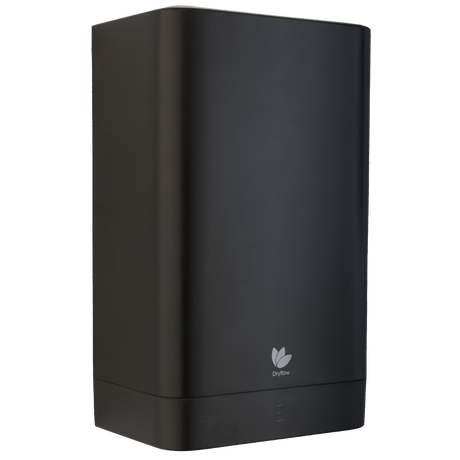With the paper towel industry ramping up its funding of anti-hand dryer PR campaigns, we thought we would remind decision makers of the following.
Interestingly the paper industry is willing to throw hundreds of millions of dollars at trying to convince people paper is the best for a whole host of activities, trying to pull on the emotions of the consumer, using divert tactics without a care for the much bigger issues; cost and climate change.
When we look at the below, it’s clear to see why they are concerned that the public is turning to more sustainable options.
If watching on a mobile device you may need to rotate your device for optimal viewing
1. Paper Towels cannot be recycled
Paper towels are contaminated waste therefore they all have to end up in landfill.
Although paper towels can be made from previously recycled paper, they are usually the last paper product to be made in the chain. This means that the paper they are made from has been recycled up to seven times before. The fibres are just too short in paper towels to be used again.
There are also reports that major paper manufacturers are not using recycled paper to make their paper products, as the shear demand for means virgin trees are having to be felled to keep up due to recycled paper stocks being limited.
2. Decomposing paper hand towels contribute to global warming
In the USA alone, 13 billion pounds (6,500,000 TONS) of paper towels are sent to landfills each year. The decay of paper products and landfills in general produce methane gas which is 28 times more potent than carbon dioxide , therefore a real threat to global warming. They are also often put in plastic bags, creating further downstream problems in the recycling process.
3. The average paper towel generates more CO2 per dry than other methods
Life Cycle analysis shows that the effects of felling raw materials, transportation, manufacturing, packaging, storage on a constant loop, significatly produces a lot of CO2 into the atmosphere.
Also, to make one ton of paper towels, 17 trees are cut down and 20,000 gallons of water are consumed and polluted.
We have already mentioned above that decomposing paper towels produce methane gas. Methane gas is a leading cause of global warming.
The paper industry has put profit before the environment for the last 100 years, including the influential campaigns to dissuade consumers to turn against the much more sustainable use of hemp pulp to make paper back in the early 1900’s. A trend which seems to be continuing by discrediting other more environmentally friendly hand drying methods with fear spreading tactics to continue their massive profit building over what’s better for the earth we live on.
We also encourage people to take a look at the possibilities of bamboo as a much more sustainable source of paper rather than current methods of felling trees.
4. Paper Towels are one of the biggest causes of blocked drains
We are constantly told by facilities managers that they are switching to low-maintenance hand dryers because they are fed up of towels blocking the toilets. People like to use them as a barrier on the seat as they give extra protection not offered by thin toilet tissue and school kids and drunk people love shoving them in the toilet! The fibres don’t break down like tissue and blockages are inevitable. What is more unhygienic or downright unpleasant than a blocked toilet, not a great image!
How to unblock a toilet click here
Schools can benefit a huge amount from switching. Check our range of hand dryers for schools here.
5. An empty paper towel dispenser is the biggest risk to hygiene
It is widely accepted that wet hands are the biggest hygiene risk and it goes without saying that hand towels are often missing and large handfuls come out at once or no one notices in time to refill the dispenser.
The paper towel industry knows this is a problem and tries to design products to reduce the chances of this, but the majority of systems are inadequate.
So, if there’s no paper towels you just use toilet paper, right?
Did you know that “According to new research conducted by microbiologist Charles Gerba, of the University of Arizona, the average toilet paper dispenser has more than 150 times the amount of bacteria than the average toilet seat. The picture isn’t much improved when it comes to paper towel dispensers. These were found to have over 50 times more bacteria on average than a typical public restroom toilet seat”
6. Paper towels cost on average 95% more than hand dryers
When comparing energy efficient hand dryers with paper towel costs, the savings can be massive.
Quick example:
Energy efficient hand dryer – Dryflow Vapordri
- Rated power: 1000 W (intelligent heating system)
- Dry time: 11 seconds
- Energy per dry: 3.06Wh
- Cost per 1000 dries: 37p (based on 12p per kW/h)
- Carbon production: 1.65 Kg/CO2
Paper towels
- Paper towels: on average, 3 taken per dry
- Cost per paper towel: average 0.5p
- Cost per 1000 dries: £15
- Carbon production: 22.5 Kg/CO2
Saving: £14.63 per 1000 dries. A 98% saving!
To put into context:
An office of 20 people
Number of toilet visits a year: 23,400 (each person using the bathroom 4.5 times a day 260 days a year)
| Annual cost | Annual carbon production | |
| Paper Towels | £351 | 527 Kg/CO2 |
| Dryflow Vapordri | £9 | 39 Kg/CO2 |
7. There are hygiene concerns over paper towels
The paper towel industry has moved away from talking about the critical issue of hand hygiene as they well-know it’s how thoroughly you wash and dry your hands, not which method you use is the determining factor.
The PR centres around Jet dryers spreading bacteria to floors and walls when the hands have not been washed properly.
- These are non-touch areas
- The bacteria found was much less than most things we come into contact with each day
- The paper towel bin and overflow are a breeding ground for bacteria as it thrives in wet conditions!
The paper towel industry also knows that many of its own dispensing systems are inadequate and cause contamination points. Wet hands reaching into dispensers to unblock them leaves a wet, damp environment for the next user. An environment ideal for bacteria to grow in .
It has been shown that bacteria can be transferred from hands to paper-towel dispensers and then back from dispenser to hands if either one is contaminated. This occurs when people often have trouble taking paper towels from the dispenser exit and touch the unit itself. A common process in reality.
It’s been found that six times more bacteria grew on paper-towel dispenser push-and-crank handles than on the Airblades. Manufacturers are constantly bringing out touchless systems with captive refills so they can keep prices high in the face of lower cost hand towels, the fact is that the majority of buyers still want to buy cheap’ so most dispensers are touched.
A pilot study shows that bacteria actually lives in paper towels, yet this hardly gets a mention in the media. So again, shows that paper towels are not as sanitary as the paper towel industry are self-promoting.
For more information, please call us UK offices: North: 0114 3540047 South: 0203 3270448; Eire office: +353 19036387, use our contact us page by clicking here





